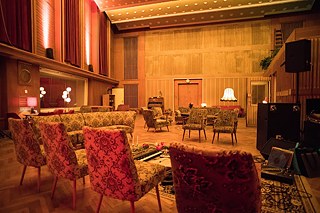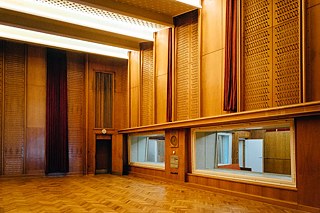Bicultural Urbanite Luke
Soviet Decadence Revamped: Inside the Funkhaus
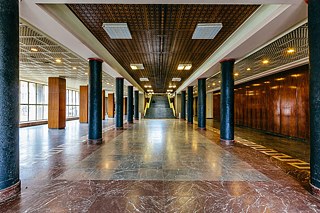
Up until recently, the Funkhaus remained one of Berlin’s best-kept secrets. A grandiose complex of purpose-built recording studios and a veritable goldmine for Instagram clout, I was always amazed the place wasn't permanently crawling with well-clad millennials—smartphones poised and ready for lush image-crafting.
Tucked away in a barren industrial pocket of Treptow-Köpenick, the location of what was once home to the GDR’s symphony orchestra—and the world’s largest radio-broadcasting site of its time—is remote enough from Berlin’s gentrification zones to have mostly held attention at bay. When my bandmate and I first started recording there, we used to roam the dilapidated grounds of the enormous three-block site in between late night sessions in total isolation. And while it’s become commonplace to fetishise Berlin locations for the sombre atmosphere of their historical significance (guilty as charged, right here) I was always especially captivated by the eerie melancholy pervading the never-ending hallways of the Funkhaus. The place felt alive with the ghosts of former times.
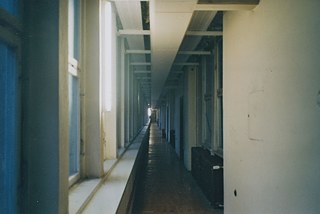
Modern-day institution for musical magic
But things have been changing down at Nalepastraße since a new private developer took the reigns in 2015—slowly but surely diminishing in haunted-house vibes and gathering an air of invigoration. Hearteningly, rather than spoiling a hidden gem, the German entrepreneur appears to be carefully polishing it up into a modern-day institution for musical magic, rescuing the one-of-a-kind complex from an extended period of structural decline since the GDR’s final broadcast in 1991.The Funkhaus certainly offers a lot to work with, architecturally speaking. Dreamt up by Bauhaus disciple Franz Ehrlich in a career-affirming flourish, the facility was brought to life in the 1950s by the lavish funding of a Soviet-governed East Berlin, eager to outdo the West in ostentatious prosperity. But what makes the Funkhaus so special is not just its undeniable opulence; from a musical standpoint what sets it apart is that Ehrlich worked closely with an expert team of acousticians to ensure an impeccable standard of sonic precision—exactly 2.4 seconds of reverb in the biggest of its orchestral chambers, Saal 1—which to this day remains world-class in its German exactitude.
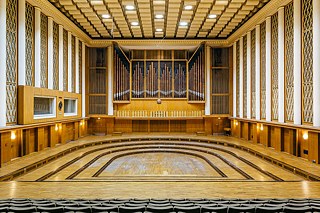
The inimitable buzz of creation
It’s therefore no surprise the place has been pulling all kinds of acclaimed international bookings since the reclamation, with everyone from Bon Iver to Mariah Carey itching to augment their live sound with the celestial resonance of these imposing halls. But it’s not just the big-name performances responsible for the current hype and activity around the location; lately I’ve noticed another kind of excitement in the air during my visits to the Funkhaus—the inimitable buzz of creation. Block A has long been home to a nest of smaller private studios and music production schools, and the reopening of the main halls in Block B as commercial venues has seen renewed interest the original intention of their design—as recording studios proper.One offshoot of all this is the venture of three young sound engineers involved with the Funkhaus. Jonny Zoum, Michelle Moreno and Zak Davies recently resolved to bring the gorgeous Saal 4 back to life as a fully functioning studio for the first time in years. After successfully pitching the idea to the new owner in a giddy rush a couple of months back, the trio proudly opened Saal 4 for bookings as a commercial pro studio on 30 May 2018, salvaging the broadcast-quality cabling of the original construction and embellishing the rooms with a mouth-watering selection of niche studio gear.
This latest project is another decisive step forwards in the reenergising of what is unequivocally one of the most impressive and historically interesting locations for music production and performance in the world. And while the Funkhaus may no longer be a private playground for clued-in industry folk, the kind of energy currently surging through this antique beauty is a reminder the term ‘gentrification’ need not be exclusively grumbled in venomous tones—change and redevelopment comes in all shapes and sizes.
